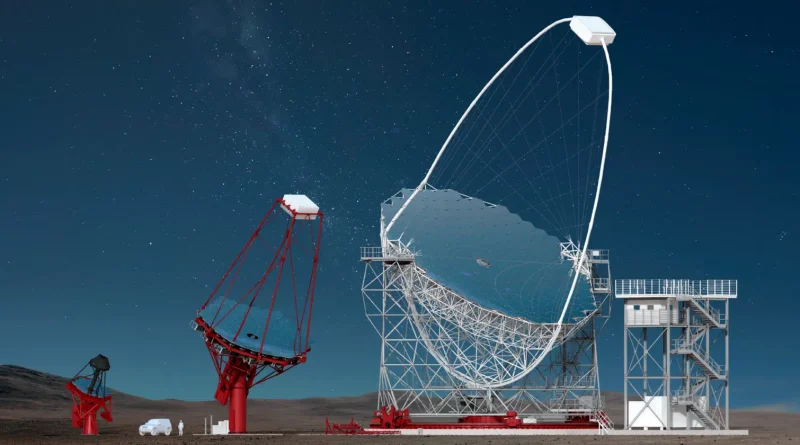The CTAO Becomes a European Research Infrastructure Consortium
On Tuesday 7 January, the European Commission announced that it had granted CTAO (Cherenkov Telescope Array Observatory) the status of European Research Infrastructure Consortium (ERIC), a specific legal form under European Union law that facilitates the creation and operation of research infrastructures of European interest. This makes CTAO the 29th ERIC to be created since 2009.
By providing an internationally recognised legal structure, the European Commission’s decision will speed up the construction of the Observatory and facilitate its operation by ensuring stable funding for the infrastructure, supporting the recruitment of new staff and providing a framework for distributing the Observatory’s data worldwide.
This decision comes at a pivotal time for CTAO: the first telescopes at its northern site in the Canary Islands (Spain) are starting to take data, and the first telescopes will be installed at its southern site in the Atacama Desert (Chile) next year. When it starts up, CTAO will be the largest and most sensitive observatory for gamma-ray astronomy in the world. It will help to shed light on major questions in modern physics, such as the origin and acceleration of cosmic radiation, the behaviour of matter in the extreme environments of black holes, and the nature of dark matter.
The project is being carried out by a scientific collaboration of 150 laboratories from around 30 countries, in which France has played a decisive role, both in defining the scientific objectives and in developing and now building the telescope arrays. As a result of this involvement, the project has been recognised as a Very Large French Research Infrastructure (RI*) as of 2018.
‘The status of ERIC establishes CTAO as one of the major infrastructures for European research’, says Thierry Stolarczyk, co-spokesman of the CTAO Scientific Consortium. ‘This event rewards 20 years of efforts by the researchers, engineers and technicians of the international consortium involved in defining the scientific and technical project, and today in building the telescope arrays. It symbolically marks the start of a new phase towards the exploitation of the first data, which will soon lead to new discoveries in the Universe seen in gamma rays’.
‘The creation of the CTAO ERIC at the start of 2025 is excellent news for the entire European gamma-ray astronomy scientific community. This creation has been eagerly awaited, particularly by French research establishments, which are among the main contributors to the infrastructure,’ explains Guy Perrin, French delegate to the Board of Governmental Representatives of CTAO.
LAPP and CTAO
LAPP is heavily involved in the construction of the CTAO observatory’s large telescopes, the LSTs (Large Size Telescopes), which are designed to capture lower-energy events and study transient phenomena. LAPP is working on the detection of gamma-ray bursts, as well as on observations of the eruptions of active galactic nuclei.
The Astro-Gamma team at LAPP is responsible for producing the arch of the LST telescopes supporting the camera, all in composite materials. It is also developing the telescope motion and computer control system and optimising communications between the software environment, programmable logic controllers and other on-board devices.
LAPP is also involved in generating alerts for rapid observations, carrying out high-performance analysis projects or projects based on machine learning techniques, as well as off-site computing and data archiving.
In 2019, a team from LAPP was awarded the CNRS Collective Crystal award for its contribution to the design and construction of the Large Size Telescopes (LST) at CTAO.
More information
- CTAO Announcement: https://www.ctao.org/news/the-ctao-becomes-an-eric/
- CTA at LAPP: https://www.lapp.in2p3.fr/en/research/cta
- Image: CTAO will bring together several dozen telescopes deployed over two observation sites. It will comprise three types of telescope with different sensitivities: small (LST), on the left of the image, medium (MST), in the centre, and large (LST).
Crédit: Gabriel Pérez Díaz, IAC


